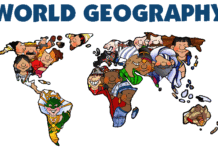1.Which of the following is a large blood vessel that carries blood away from the heart?
A.Vein
B.Artery
C.Capillary
D.Nerve
Ans. B
Explanation: The pulmonary artery carries blood from the right side of the heart to the lungs to pick up a fresh supply of oxygen.
2.Which of the following is not a member of the vitamin B complex?
A.Thiamine
B.Riboflavin
C.Folic acid
D.Ascorbic acid
Ans. D
Explanation: Vitamin b complex consists of 8 vitamins namely B1, B2, B3, B5, B6, B7, B 9 and B12. Vitamin B1 is Thiamine, Vit B2 is Riboflavin, Vit B3 is Niacin, Vit B5 is pantothenic acid, Vit B6 is pyridoxine, biotin, folic acid and Vit B12 is cyanocobalamin.
- Fungi are plants that lack:
A.Oxygen
B.Carbon dioxide
C.Chlorophyll
D.None of these
Ans. C
Explanation: We know plants prepare their own food and so are known as autotrophs. With the help of photosynthesis they make food in which they produce glucose from carbon dioxide and sunlight. Also, oxygen is released by plants which is further used by humans and other animals. But Fungi lack chlorophyll and do not engage in photosynthesis.
- What makes a reptile a reptile?
- Cold blooded
- Warm Blooded
- Non-Hearing
- Egg-laying
Ans. D
Explanation: Reptiles skin is covered with hard, dry scales and most repltiles lay eggs. Those animals which are cold-blooded don’t automatically maintain a constant body temperature. They have to lay out their eggs in the sun to keep their body heat up.
5.Which blood vessels have the smallest diameter?
- Capillaries
- Arterioles
- Venules
- Lymphatic
Ans. A
Explanation: Blood is carried through the body by Blood Vessels. With the help of perfusion process capillaries supplies blood to the tissues. The diameter of capillary ranges from 5-10 micrometers. The diameter of arteriole is approx. 30 micrometer.
6.A yellow dust appears on the fingers, whenever we touch the middle of a flower. These tiny yellow grains are one of the most precious substances in nature because they contain the secret of plant life. What is this dust called?
- Pollen
- Sperm
- Spore
- Sporocyst
Ans. A
Explanation: The yellow powder is called pollen and the stick that holds it is known as stamen.
- Which organ of the body produces the fluid known as bile?
- Liver
- Pancreas
- Gall bladder
- Kidney
Ans. A
Explanation: Liver produces a digestive fluid known as bile. Liver releases Bile into Gall Bladder, a small, pear-shaped organ located just below your liver in the upper right side of your abdomen.
8.Which of the following hormones is a steroid?
- Estrogen
- Glucagon
- Insulin
- Oxytocin
Ans. A
Explanation: Steroid hormone is produced by three endocrine organs. The testes, produces testosterone; the ovaries, produces estrogen; and the adrenal cortex, produces steroid hormones such as cortisol and aldosterone. Steroid hormones are derived from cholesterol and are lipid-soluble molecules.
- Which one of the following is not a function of the liver?
- Regulation of blood sugar
- Enzyme activation
- Detoxiation
- Reproduction
Ans. D
Explanation: Liver is the body’s largest internal organ. It has many functions in the body like it helps in protein synthesis and blood clotting, manufacturing triglycerides and cholesterol, glycogen synthesis, and bile production. It also detoxifies chemicals and metabolizes drugs.
10.Which part of human body skin has greatest number Sweat glands?
- Forehead
- Forearm
- Palm of the hand
- Back
Ans: C
11.Who among the following had started vaccination?
- Jonas E. Salk
- Paul Muller
- Edward Jenner
- Robert Frost
Ans: C
- Proteins are consists of:
- Sugars
- Amino acids
- Fatty acids
- Nucleic acids
Ans: B
- Liver, milk, egg yolk, fish liver oil is the source of:
- Vitamin A
- Vitamin B2
- Vitamin D
- Vitamin C
Ans: C
14.Which of the following name of scientist and their field of work is correctly matched?
- DNA/Double helix: F. Crick J. Watson, M. Wilkins
- Modern classification of plants and animals based on a system: Harvey
- Bacteria: Linnaeus
- Blood travels in a continuous circuit: Leuwenhock
Ans: A
















